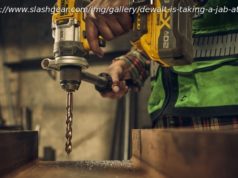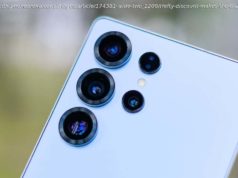Amazon’s aggressive push to make drone-delivery a commercial reality is showcased in a flurry of patent applications.
SEATTLE — A barrage of patent applications from e-commerce giant Amazon showcases a futuristic, hive-like drone-delivery tower fed by 18-wheelers and filled with robots. The patent bids also reveal the company’s possible solutions to two major drone problems: noise, and the possibility the aircraft could fall out of the sky.
It turns out that for Amazon, its current enormous warehouses — which it calls “fulfillment centers” — located on the outskirts of cities like Tracy are not ideal for serving the urban customers that make up a large portion of its market.
“There is a growing need and desire to locate fulfillment centers within cities, such as in downtown districts and densely populated parts of the cities, ” said the patent application, made public June 22 by the U. S. patent agency, along with 10 other drone-related applications from Amazon.
“By locating the fulfillment centers within the cities, items may be more quickly delivered to the growing population of people that live in the cities, as well as the large population of people who work in the cities.”
So instead of sprawling over a million square feet like the Tracy warehouse, the drone towers would rise skyward. Amazon describes “multi-level” structures, and in the patent application drawing, the building dwarfs the tractor-trailers feeding it.
Robots inside would move goods around, and might conduct maintenance on drones, according to the application, which envisions a facility that may or may not include human workers.
The building would be pierced by multiple ports on every level, with landing docks for drones. The aerial vehicles could even fly around inside the tower, according to the application.
Drone activities might largely take place on the upper levels to minimize noise, a significant concern for urban deliveries.
And Amazon’s aggressive push to make drone delivery a commercial reality is further confirmed by a flurry of patent applications addressing the noise problem. The firm has filed for more than a half dozen patents concerning propeller designs for minimizing sound, or turning it into “white noise” more acceptable to the human ear than the typical drone’s high-pitched whine.
A little auditory discomfort, however, pales in comparison to the prospect of a load-carrying drone falling on someone’s head.
While an eight-propeller drone can likely continue its flight if a motor for one prop fails, drones with four or six props “may not be able to maintain controlled flight in the event of a failure of a motor or damage to a propeller, ” another Amazon patent application said.
Amazon’s solution? Two motors per prop.
“A first motor is capable of rotating the drive shaft in an event of a failure of a second motor coupled to the drive shaft, ” the application said.
Of course, patent applications don’ t necessarily mean a product or system will be developed. But Amazon’s patent activity suggest the company is strongly committed to drone delivery.






